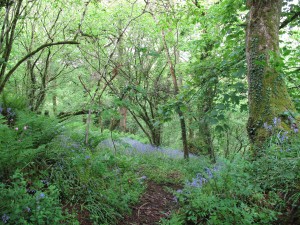‘Superorganisations’ – Learning from Nature’s Networks
This is a complete version of a ‘long-blog’ written by Al Kennedy on behalf of ‘The Nature of Business’ blog and BCI: Biomimicry for Creative Innovation www.businessinspiredbynature.com
I hope you enjoy this ‘long-blog’, as it covers important issues for today’s business paradigm shift and looks at the alignment of digitisation, organisational evolution and ecological thinking (and has useful links throughout for further information).
Fritjof Capra, in his book ‘The Hidden Connections’ applies aspects of complexity theory, particularly the analysis of networks, to global capitalism and the state of the world; and eloquently argues the case that social systems such as organisations and networks are not just like living systems – they are living systems. The concept and theory of living systems (technically known as autopoiesis) was introduced in 1972 by Chilean biologists Humberto Maturana and Francisco Varela.
Yet, we as humankind insist on the desire to organise our activities and our business processes and systems, as Alan Moore from SMLXL states, “along engineered technical, mechanistic lines; when we are part of the natural world which is fluid, adaptive and asymmetrical. We need to start to think ‘ecologically’ about businesses and communications as a not only systems, but systems within systems.”
I would like to explore the parallel between digital communications networks and systems, and their fundamental impact on the organisation of businesses. How we now need to look to nature and learn – by asking – how does nature communicate and use its own organisational networks? How can we adapt and align our business with nature.
It is clear that there are very strong similarities in the developing iterations of the ecosystems of digital culture and nature itself; as Brian Arthur declares that, “Once a technology is created, it is then subject to Darwinian evolution, whereby the innovation advances through refinement of its component systems and further innovation and addition, the weaker ideas discarded to become museum artifacts and the process continually advancing.”
You can indeed see some of nature’s principles in many digital experiences, from self-organisation to integrated feedback loops. The way software development has come to mimic a natural cyclic processes. Digital products evolve, they develop through multiple rounds of iteration. They are always versions of themselves and never truly ‘finished’. Even on a small scale, the design and development process has shortened to ‘sprints or scrums’. Short cycles of design and development iterations are put in place to effectively understand and respond to the ever-changing needs of users and ever-evolving technologies.
This rapid rise of digitisation, globalisation and our interconnectedness, the Anthropocene, is challenging the core of the way we work, live, interact and socialise. This current shift is described by Dee Hock founder of VISA, one of the leaders profiled in John Elkington’s ‘The Chrysalis Economy’ who invented the term ‘the chaordic age’ to describe the current era, with its combination of chaos and order. Hock’s vision of an organisation which could succeed in such an environment was that of a “self-organising, self-governing, adaptive, non-linear, complex organism, organisation, community or system, whether physical, biological or social, the behaviour of which harmoniously blends characteristics of both chaos and order.”
I agree, and believe, that the true potential for innovation is in an understanding of socio-technical systems as being part of wider systems. The relation to and adaptation of the natural biological models offers valuable future investigation and potential development; of which organisations have not yet fully understood or made such transitions.
There is great untapped potential to optimise the collective value of online networks and subsequently offline social relationships through biomimetic referencing. Kevin Kelly, author of ‘What Technology Wants’, argues that, “technology is best understood as an emergent system subject to the natural forces underpinning all emergent systems.” From viruses and propagation to cooperation and democratic processes nature has a bounty of examples to learn from and apply.
As this world becomes more complex, one of the most difficult challenges facing organisations today is how to be more flexible and adaptive in a dynamic, volatile business environment. We live in what has been described as a ‘networked society’ – a term coined by Dutchman Jan van Dijk in his 1991 book ‘De Netwerkmaatschappil’ and also referenced in the book ‘The Network Society’ written by Manuel Castells in 1996. Van Dijk defines the network society as, “a society in which a combination of social and media networks shapes its prime mode of organisation and most important structures at all levels (individual, organisational and societal). He compares this type of society to a mass society that is shaped by groups, organizations and communities (‘masses’) organized in physical co-presence.”
So how can we look to nature and use Biomimicry to help us optimise our groups and organisational communications to create real value in our social networks, to build or shape networked businesses that are built for resilience? Giles Hutchins describes the need for a more organic or biomimetic structure for business and organisations, “Companies of the future are ones that view their organisation as a living, vibrant, emergent organism interacting within a living, vibrant, emergent ecosystem. The resilience of the organisation is interdependent on the resilience of its business ecosystem. This brings a shift from linear, atomised, supply-chain thinking to interconnected, holistic, ecosystem thinking.
Here lies the challenge for most business organisations. As digital networks become more prevalent and influential in shaping our working structures; the so called ‘firms of the future’ will be required to become more fluid and adaptive with less rigid management hierarchies. They will become a system of interconnected people with varied and dynamic leadership styles. The key traits of this emergent economy, mimic many of ‘Life’s Principles’ such as distributed cores where the boundaries of companies become blurred. The use of adaptive technologies, flex manufacturing, mass customisation, industrial ecology and co-creation with customers. ‘The Cluetrain Manifesto’ sums it up nicely with a word to the wise: Decentralise. “The answer is to distribute control in such a way that decisions can be made as quickly and as close to customers as possible.” You will find no straight lines in nature.
Perhaps we will develop social or organisational networks that functions like a colony of ants. A web server inspired by the ‘waggle dance’ of honeybee or a database that manages and shares information like a slime mold. The potential benefit of using biomimetic and nature principles is that they are abundant and proven over 3.8 billion years, as this earth thrives and is governed by balance. Referring to “nature as model, mentor and measure,” and understanding this progression to radically innovate, develop social networks, virtual communities and business networks that are more bio-inspired, intimate, satisfying and sustainable.
Two bio-inspired examples of how nature manages organisational leadership gives us an insight toward creating distributed and decentralised structures, that we require for the future. The leaf-cutting ants do not have a leader or inefficient management structures. They have sophisticated communication systems, through the use of pheromones, which enables – an optimum balance between group behaviour versus self-interest and shared goals and values. Social insect colonies tend to work as a decentralised system, which is composed of more or less autonomous units; cooperating and distributed in the environment managing ‘local information’.
Social insects and so called superorganisms and are also good example studies of this model; because they both demonstrate scaling from parts to whole, and function across form, process and system. Salp, the barrel-shaped, planktonic tunicates found in ocean waters come together to form chains so they become superorganisms. Superorganisms are biological entities compiled of a large numbers of more simpler entities, that have collaborated to perform functions beyond their capabilities as individuals. Such functions might include mobility, unique sensors, heightened intelligence, highly specialised division of labour, distributed intelligence, and self-organisation. According to Bonabeau and Meyer, swarm intelligence is the collective behaviour that emerges from a group of social insects. Individually they have meagre intelligence, they work with no supervision, and yet collectively they can achieve remarkable outcomes. One of the reasons these insects are believed to be able to do this is self-organisation or performance of activities that are – neither centrally controlled nor locally supervised. This is perhaps the most powerful insight from swarm intelligence – demonstrating that complex collective behaviour can emerge from individuals following a set of simple rules on their own. Drawing parallels to organisations; therefore the power of employees collectively should never be underestimated.
It is clear that the pervasive nature of digital and web based technologies have very similar characteristics to these ecological examples and networks. By cultivating cooperative relationships, organisms and organisations both find successful ways to develop and grow. With the potential global connectivity of individuals working directly together has immense potential to co-create more balanced future – just as in nature.
We can also learn a great deal from nature’s communications systems; which use short instant messaging; with information broadcast and received in situ. This process is very counter to the way human activity is managed, where communications are usually presented or created in long form and can also be very documentary. Perhaps we are seeing ‘weak signals’ of a reawakening of our very own ‘waggle dance’ or pheromone-style short messaging instinct with the rise and popularity of social network platforms such as Twitter, communicating by ‘tweets’ – mimicking the biological bird call metaphor, and SMS messaging so popular in mobile phone communications. Short instant messages – broadcast more frequently and creating a real time information flows.
Some of the behaviours that are starting to emerge within these platforms, as mentioned, such as signaling (tweeting) and real time feedback relate to the life principle of responsive attributes. The ‘always on’ transparent approach of communicating – using Facebook, Instagram, Linkedin or many other social networks ‘Likes’ or followers as a broadcast of status or influence – combined with interactions and location based tagging within (real time) networks. Already we are seeing the development of what has been termed ‘The Internet of Things’ (IoT) – creating communications between everyday objects or the ability for machines to ‘sing’ to each other, as developed in a product called Chirp.io, which can transfer data by broadcasting birdsong or ‘chirps’. The development of API’s that build small functionality feeding into larger systems. These are clearly just developing innovative ideas but it is truly exciting to imagine the future possibilities and how we can look to nature to help create more resilient communication systems.
The systemic shift and radical innovation that is required can be found, I believe, in the power and connectivity of networks which is now available to us through digital technology. Wheatley argues that, emergence has a evolutionary life cycle which starts that with a network; this, then develops into communities with intention of practice; and then finally evolving into global systems capable of powerful influence. “As networks grow and transform into active communities of practice we discover how life truly changes, which is through emergence. Emergence is how life creates radical change and takes things to scale”.
If chaos theory transformed our view of the universe, biomimicry is transforming the way we live on earth, literally enabling us to use the known world to create a ‘new operating system’. Biomimicry is the quest for innovation inspired by nature. In fact, biomimicry works precisely because there is no difference between what we do and what other organisms do—the boundary between us and the rest of the natural world is a false one that dissolves when you consider what is really important, what makes life worth living. Kevin Kelly describes the move from a ‘clockwork logic’ to a complex ‘bio-logic’ that is capable of developing thinking, living systems that our complex world demands: corporations, economies and computer circuits. This parallel relationship between nature and technical complex systems Kelly describes as “vivi-systems” and he proposes that the “world of the made will soon be like the world of the born: autonomous, adaptable, and creative but, consequently out of our control.” The hyper connection and web of life we can now experience through the use of digital tools and platforms will allow us to circumnavigate the old paradigm and develop for the collective greater good. Peter Senge said, “It seems to me that deep down the deepest questions for me have to do with the conscious evolution of human systems.”
So I conclude, that if those human systems would be based upon nature; Biomimicry, as a ‘conscious’ reference, allowing ourselves to ‘quieten human cleverness’, opens a proven and sustainable reference library to design real scalable and sustainable change. Paul Hawken, says the transition from, “immature to mature eco systems is called ecological succession and that now in business we need commercial succession – to move from a toxic linear shareholder driven system to one that regenerates, is low impact and creates value for all including nature”.
Trackbacks
- ‘Superorganisations’ – Learning from Nature’s Networks | The Nature of Business « BIOTOPOS
- ‘Superorganisations’ – Learning from Nature’s Networks « Knowledge Team
- ‘Superorganisations’ – Learning from Nature’s Networks « Things I grab, motley collection
- Technology and Society Building our Sociotechnical Future Inside
- ‘Superorganisations’ – Learning from Nature’s Networks | ecology and economic | Scoop.it
- ‘Superorganisations’ – Learning from Nature’s Networks | Web 2.0 for juandoming | Scoop.it
- ‘Superorganisations’ – Learning from Nature’s Networks « juandon. Innovación y conocimiento
- ‘Superorganisations’ – Learning from Nature’s Networks | Distance Running | Scoop.it
- ‘Superorganisations’ – Learning from Nature’s Networks | Human Health | Scoop.it
- ‘Superorganisations’ – Learning from Nature’s Networks | Neuroethology | Scoop.it
- ‘Superorganisations’ – Learning from Nature’s Networks | Soul Fill | Scoop.it
- ‘Superorganisations’ – Learning from Nature’s Networks « news ALFA
- ‘Superorganisations’ – Learning from Nature’s Networks | Cultura de massa no Século XXI | Scoop.it
- ‘Superorganisations’ – Learning from Nature’s Networks | Organizing yourself and leading your Organization | Scoop.it
- ‘Superorganisations’ – Learning from Nature’s Networks | Professional Communication | Scoop.it
- ‘Superorganisations’ – Learning from Nature’s Networks | Bioinformatics Training | Scoop.it
- ‘Superorganisations’ – Learning from Nature’s Networks | Rise of the Fourth Economy | Scoop.it
- ‘Superorganisations’ – Learning from Nature’s Networks | Marketing Revolution | Scoop.it
- ‘Superorganisations’ – Learning from Nature’s Networks | The *Official AndreasCY* Daily Magazine | Scoop.it
- ‘Superorganisations’ – Learning from Nature’s Networks | "Biotech and Mol Bio" | Scoop.it
- ‘Superorganisations’ – Learning from Nature’s Networks | Focus On Improvements | Scoop.it
- ‘Superorganisations’ – Learning from Nature’s Networks | Economie de l'innovation | Scoop.it
- ‘Superorganisations’ – Learning from Nature’s Networks | 21C Learning Innovation | Scoop.it
- ‘Superorganisations’ – Learning from Nature’s Networks | Semantic Gnosis Web | Scoop.it
- ‘Superorganisations’ – Learning from Nature’s Networks | Social Business - the new way of working | Scoop.it
- ‘Superorganisations’ – Learning from Nature’s Networks | Appreciative Inquiry NEWS! | Scoop.it
- ‘Superorganisations’ – Learning from Nature’s Networks | Growing Organizations | Scoop.it
- ‘Superorganisations’ – Learning from Nature’s Networks | A RUOTA LIBERA TRA LE RETI | Scoop.it
- ‘Superorganisations’ – Learning from Nature’s Networks | Amazing Science | Scoop.it
- «Superorganisations ‘- Imparare dal Networks Natura« La natura del business « Nicocara's Blog
- ‘Superorganisations’ – Learning from Nature’s Networks « Nicocara's Blog
- ‘Superorganisations’ – Learning from Nature’s Networks | Psycholitics | Scoop.it
- ‘Superorganisations’ – Learning from Nature’s Networks | Biomimicry, Adaptive Design, Design for Humanity | Scoop.it
- ‘Superorganisations’ – Learning from Nature’s Networks | DDRRNT
- ‘Superorganisations’ – Learning from Nature’s Networks | Aspel Main
- ‘Superorganisations’ – Learning from Nature’s Networks | kwalitisme
- ‘Superorganisations’ – Learning from Nature’s Networks » DIGITAL QUIPU
- ‘Superorganisations’ – Learni...












Reblogged this on Sustainable USA and commented:
An Interesting look that redefines business and networks as living systems via the concept of biomimicry. The digital world is it’s own ecosystem.
Cosmic Synchronicity! My blog echos similar sentiments, focus on the Internet of Things.
Reblogged this on A Dialogue Of One.
I am searching to get a proficient author, long time within this region. Outstanding write-up!